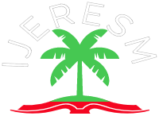A Study of the Traditional Health Care Practices in Ancient Tamil Nadu – An Assessment
A. Abdul Kareem
Dr. G. Yoganandham
Research Scholar, Dept. of Economics, Thiruvalluvar University, Serkkadu, Vellore District, Tamil Nadu, India
Associate Professor & Head, Dept. of Economics, Thiruvalluvar University, Serkkadu, Vellore District, Tamil Nadu, India
Abstract: India is known around the world for its diverse civilizations and mystical rituals. Scholars and philosophers of the time formed a century-old tradition in the depths of this culture. Despite a long history of being viewed as unscientific, scientists and doctors are now aware of the benefits of traditional Indian health care. Many investigations on traditional medicine and its apparently magical qualities in the treatment of terminal diseases are currently being done. Home remedies are used all around the world, but they are recognized as science in India only. Two traditional Indian medicinal traditions: Ayurveda and Siddha are progressively gaining traction in the global healthcare business. In this article, some of India’s most odd and effective medicinal practices, as well as the benefits of each therapy will be reviewed. Throughout history, traditional medicines were the only source of primary healthcare, and they made a substantial contribution. Knowledge of how to use medicinal plants to treat various ailments was highly valued by ancient cultures. Until the mid-nineteenth century, plants were the principal therapeutic agents used by humans, and they continue to play an important role in pharmaceutical formulations. Traditional medicine is used by around 80 percent of people in undeveloped countries for their primary health care needs because of its low prices, effectiveness, frequently restricted availability of modern medicine, and cultural and religious preferences. Plant research in the traditional system of medicine is becoming increasingly significant in the development of global healthcare and conservation efforts. Traditional medicine systems are being used to uncover biologically active chemicals that are useful to the pharmaceutical industry. To this end, as much information possible is presented about these areas in this article. There are a number of geographically specific traditional health behaviors and are well reviewed in this paper.
Keywords: Ayurveda and Siddha, Herbal Medicine, Homeopathy, Traditional Indian Health Care, Unani.
References:
- Subhose, P. Srinivas, and A. Narayana, “Basic principles of pharmaceutical science in Ayurvěda,” Bulletin of the Indian Institute of History of Medicine, vol. 35, no. 2, pp. 83–92, 2005.
- Ballabh and O. P. Chaurasia, “Traditional medicinal plants of cold desert Ladakh-Used in treatment of cold, cough and fever,” Journal of Ethnopharmacology, vol. 112, no. 2, pp. 341–345, 2007.
- M. Pandey, S. Rastogi, and A. K. S. Rawat, “Indian herbal drug for general healthcare: an overview,” The Internet Journal of Alternative Medicine, vol. 6, no. 1, p. 3, 2008.
- Patwardhan, D. Warude, P. Pushpangadan, and N. Bhatt, “Ayurveda and traditional Chinese medicine: a comparative overview,” Evidence-Based Complementary and Alternative Medicine, vol. 2, no. 4, pp. 465–473, 2005.
- P. Samy and S. Ignacimuthu, “Antibacterial activity of some folklore medicinal plants used by tribals in Western Ghats of India,” Journal of Ethnopharmacology, vol. 69, no. 1, pp. 63–71, 2000.
- Rabe and J. Van Staden, “Antibacterial activity of South African plants used for medicinal purposes,” Journal of Ethnopharmacology, vol. 56, no. 1, pp. 81–87, 1997.
- John, “One hundred useful raw drugs of the Kani tribes of Trivandrum forest division, Kerala, India,” International Journal of Crude Drug Research, vol. 22, no. 1, pp. 17–39, 1984.
- J. H. Veale, K. I. Furman, and D. W. Oliver, “South African traditional herbal medicines used during pregnancy and childbirth,” Journal of Ethnopharmacology, vol. 36, no. 3, pp. 185–191, 1992.
- Anesini and C. Perez, “Screening of plants used in Argentine folk medicine for antimicrobial activity,” Journal of Ethnopharmacology, vol. 39, no. 2, pp. 119–128, 1993.
- A. Cox, Ciba Foundation Symposium 154, John Wiley & Sons, Chichester, UK, 1990.
- A. Cox and M. J. Balick, “The ethnobotanical approach to drug discovery,” Scientific American, vol. 270, no. 6, pp. 82–87, 1994.
- I. Baohong, “Drug resistance in leprosy—a review,” Leprosy Review, vol. 56, no. 4, pp. 265–278, 1985.
- Ahmad I, Lakhani MS, Gillet M, John A, Raza H, “Hypotriglycerdemic and hypochlesterolemic effects of anti-diabetic Momordica charantia(Karela) fruit extract in streptozotocin diabetic rats,” Diabetes Res Clin Pract. 51:155–161, 2001.
- Ambike SH, Rao MRR, “Studies on a phytosterolin from the bark of Ficus religiosaPart-I,” Indian J Pharm. 29:91, 1967.
- Anand R, Patnaik GK, Roy K, Bhaduri AP, “Anti-oxaluric and anticalciuric activity of lupeol derivatives,” Indian J Pharmacol. 27:265–268, 1995.
- Anjaria JV, Varia MR, Janakiraman K, Gulati OD, “Studies on Leptadenia reticulata: Lactogenic effect on rats,” Indian J Exp Biol. 13:448, 1975.
- Bibliography of CDRI Research contributions 1951–1990. Contains information on fourteen screening studies undertaken on medicinal plants. India: Central Drug Research Institute; 1991. p. 56. Anonymous. 61, 72, 83, 89, 104, 112, 127, 169, 187, 203, 224. (Publication no- 1236, 1358, 1599, 1844, 1965, 2306, 2307, 2478, 2817, 3712, 3713, 4080, 4431, 4867)
- The Ayurvedic Pharmacopoeia of India Part-I and Volume-II Ist edition.New Delhi: Ministry of Health and Family Welfare, Govt. of India; 1999. Anonymous.
- The Ayurvedic Pharmacopoeia of India. Part-I, Volume-III.New Delhi: Ministry of Health and Family Welfare, Govt. of India; 2001. Anonymous.
- Arora RK, Chawla R, Shikha R, Kumar R, Sharma A, Puri SC, Sinha AK, Tripathi RM, Sharma RK., “Radioprotection by Himalayan high-altitude region plants. Herbal Drugs : A twenty First century Perspective,”JAYPEE Brothers, pp. 301–325, 2006.
- Baliga MS, “Mechanisms and pre-clinical efficacy of plants in preventing UV-induced skin damage: Current status and Future prospects.,” In: Sharma RK, Arora R, editors. Herbal Drugs: A twenty First century Perspective.New Delhi: JAYPEE Brothers; 2006. pp. 497–521.
